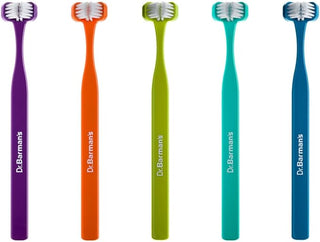If brushing your child’s teeth feels like a daily battle, you’re not alone. As a parent of a sensory-sensitive child myself, I get it — toothbrushing can be one of the hardest parts of the day.
For many kids, the feeling of bristles on their gums, the taste or smell of toothpaste, or even the pressure involved can be overwhelming or downright unbearable.
But here’s the thing: it doesn’t have to be a war every night. With a bit of patience, empathy, and the right tools, you can make toothbrushing easier for your child — and for you.

Why Is Toothbrushing So Hard for Some Kids?
Many autistic children and people with sensory processing differences experience hypersensitivity, which means ordinary sensations can feel intense or unpleasant. The texture of toothpaste, the smell of mint, or the feeling of the brush bristles can trigger anxiety, gagging, or even meltdowns.
As a parent, it can be exhausting trying to get them to brush their teeth when their reaction feels like a full sensory overload. But this isn’t stubbornness or defiance — it’s a sensory reaction, and it deserves our understanding.
What I’ve Learned: Tips That Really Work for Us
1. Understand Your Child’s Sensory Triggers
Be a detective and gently explore what’s hard about brushing. Is it the toothpaste flavor? The texture? The pressure? The noise or vibration of an electric toothbrush?
For example, my son can’t handle minty toothpaste or electric toothbrush vibrations — they just add to his discomfort.
2. Let Them Have Choices
Giving your child control can lower resistance. Choices like:
- Picking their toothbrush (manual or electric)
- Choosing when to brush (before or after pyjamas)
- Deciding if they want to brush first or watch you brush first
Even small decisions can make a big difference.
3. Use the Right Toothbrush — We Love Dr. Barman’s
One game-changer for us has been Dr. Barman’s toothbrush. Its rounded filaments gently hug the teeth and gums, offering thorough cleaning without harshness. The soft, silicone-like bristles are perfect for sensitive mouths and have made brushing a lot less stressful for my son.
4. Try Flavourless or Mild Toothpaste
Strong mint flavours or gels can trigger gag reflexes or refusal. Flavourless or mild toothpaste options are often a safer bet. It took some trial and error, but finding a toothpaste my son could tolerate really helped.
5. Use Distractions Wisely
Playing a two-minute timer video, a favourite song, or letting your child hold a comforting toy can turn toothbrushing from a chore into a more relaxed experience. Distraction isn’t cheating — it’s smart parenting!
6. Create a Visual Routine
A simple picture chart showing steps like “brush teeth,” “rinse,” and “done” adds predictability. Kids with sensory issues or autism often do better when they know exactly what’s coming next.
7. Brush Together
Make brushing a team effort. Side-by-side brushing in front of a mirror not only models the routine but makes it less scary. Bonus: kids love watching themselves brush!
8. Go Slow with Gradual Desensitization
If your child is very sensitive, start small. Let them hold the toothbrush, brush a favourite stuffed animal’s teeth, or use just a tiny amount of toothpaste. Slowly increase exposure over time to build tolerance.
A Quick Recap: The Best Toothbrushing Tips for Sensory-Sensitive Kids
- Explore your child’s sensory preferences and triggers
- Give them choices to feel in control
- Try Dr. Barman’s soft, rounded filament toothbrush
- Use flavourless or mild toothpaste
- Use distraction like songs or videos
- Make a visual routine chart
- Brush teeth together as a team
- Slowly build up tolerance through gradual desensitization
Final Thoughts
Toothbrushing may still be a battle some days — and that’s okay. The goal isn’t perfection, but progress and making the routine less stressful. With empathy, patience, and the right tools, you’ll get through this.
What’s your top toothbrushing tip?
Share it below — we’re all in this together!

